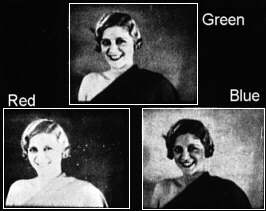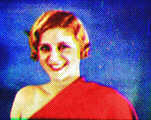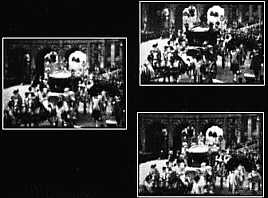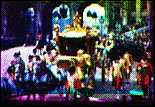

The Horst process saw a brief flurry of activity in Britain and Europe
in the early 1930's. The camera recorded all three color records within
the confines of a conventional 35mm frame, which made for a rather small
image but registration was maintained. Beam splitters split the spectrum
to place the images on a black & white film. The Horst process benefitted
from having only a single camera lens. The projector used three lenses
to merge (with varying success) the three images after they passed through
their respective filters. While the color may have been fairly accurate,
it suffered from excessive grain and a dim projected image, a trait of
all additive color processes. Convergence of the projected image was at
the mercy of the projectionist. The subject matter in these two examples
is unknown..


